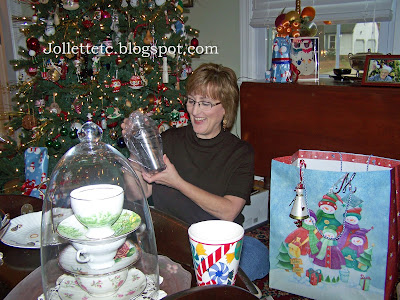My goal for 2019 was to blog twice a week throughout the
year. I committed to Amy Johnson Crow’s 52 Ancestors in 52 Weeks challenge. My second
blog of the week would be Sepia Saturday. The good news is I completed the 52
Ancestors challenge. The bad news is I fell short – 5 months-worth – with Sepia
Saturday. I had been a devoted participant since November 2011. Therefore, it
should come as no surprise that most of my photos and stories have been used
already. While I have been known to repeat a story, I don’t like it, so there were
many weeks that I just did not even bother trying to join in the fun. But I
miss that connection, and I consider my poor participation as my biggest failure in a long time.
Let’s look back using my favorite categories:
Top 5 Blog Posts
(all are from the 52 Ancestors series)
Top 5 Genealogy-Related Activities
- As a volunteer for Find-a-Grave, I receive an alert when someone requests a photo of a tombstone in a nearby cemetery. If the stone is in a family plot or if there are other related stones, I take photos of them to post as well. I created several memorials.
- Assisting women with their applications to DAR continues to be important to me. I assist with establishing their lineage to a patriot of the Revolutionary War. Our chapter is happy to welcome 5 new members this year. If I hadn’t had blinders on, we could have had 6, but that member will get her national number in January 2020.
- I volunteer for one of the indexing projects for DAR. However, I confess that I did not spend as much time on this project as in years past.
- When invited by the District 1 Director to serve as the Volunteer Genealogist, I accepted knowing full well it would not require much of my time. And it hasn’t.
- Participating in the A-Z April Challenge has helped me catalog family heirlooms so that my daughters will know the stories and value of the STUFF they will inherit one day.
Top 5 Discoveries
- The Mathias family has long wondered why their grandfather Russ Kohne was raised by his grandfather Peter Kohne. What became of Russ’s father Lemuel? Just recently, newspapers coming online told the story: Lemuel murdered his neighbor over a boundary line dispute.
- Information provided in a memorial on Find-a-Grave proved that the Sarah Herndon buried in Iowa is NOT the Sarah Herndon married to Ezekiel Herndon, my 3X great-grandparents. The date and place of death appearing on countless trees on Ancestry are WRONG.
- On a whim, I searched my name in GenealogyBank and found an article about my VERY brief participation in Little Theater. The article revived a memory long forgotten.
- I knew my paternal grandfather had done some moonshining in his younger years but I had no clue as to the extent until I found several articles about the trials and convictions.
- Just by accident I discovered a fascinating story about the death of a distant cousin’s husband. The news articles are inconclusive about whether he was forcibly pushed or fell from the train during a robbery. The story of the accused, however, is the stuff movies are made of.
Top 5 Best Money Spent
- Ancestry
- Fold3
- GenealogyBank
- Newspaper Archive
- DAR dues
As I look ahead to 2020, I have set some goals:
- Continue the 52 Ancestors in 52 Weeks challenge
- Get back on track with Sepia Saturday
- Energize my enthusiasm for genealogy and blogging by joining Amy Johnson Crow’s Generations Café Circle
- Commit to viewing more webinars and Facebook Live with Lisa Lisson
- Stop talking about going to the Library of Virginia and county courthouses and DO IT
Wendy
© 2019, Wendy Mathias. All rights reserved.





















































